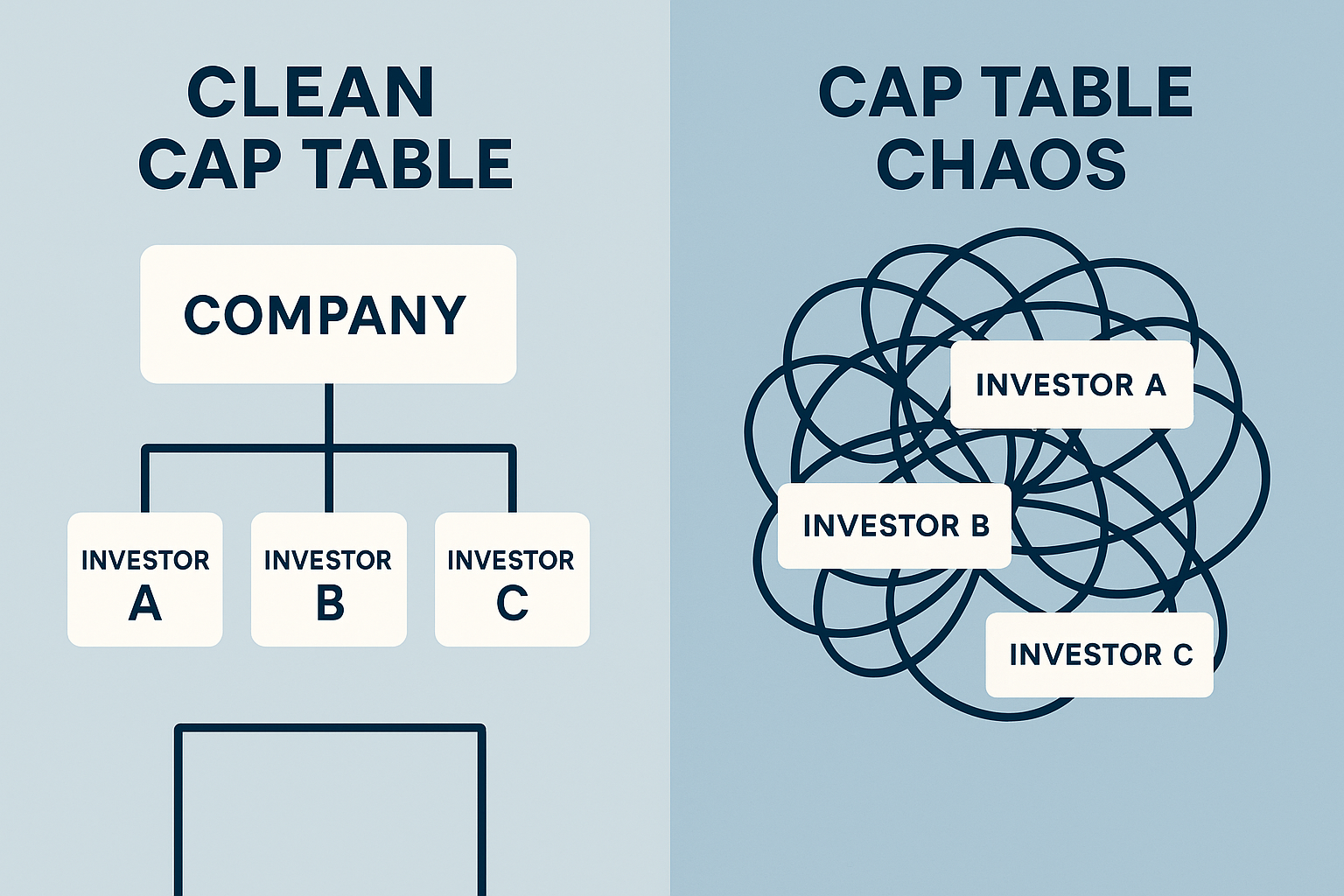1 (800) 584-0324
When startups raise funding or issue employee equity, they create a capitalization table—commonly called a cap table. This document shows who owns what in the company: founders, employees, angels, venture capitalists, and other stakeholders.
For early-stage companies, cap table management often gets overlooked. But investors scrutinize it closely. A messy, outdated, or unclear cap table can scare off potential backers—while a well-managed one signals professionalism and readiness for growth.
What Is a Cap Table?
A cap table is a detailed record of a company’s ownership structure. It typically includes:
- Founders’ equity stakes
- Preferred vs common shares
- Convertible notes or SAFEs outstanding
- Employee stock option pool (ESOP) allocations
- Equity held by angels, VCs, or strategic investors
Essentially, it answers: Who owns how much of the company—and under what terms?
Why Capitalization Table Management Matters in Fundraising
- Transparency: Investors need to see a clear picture of ownership before committing capital.
- Avoiding surprises: Unclear equity splits or hidden convertible obligations can derail a deal.
- Employee motivation: A clean stock option pool helps attract and retain top talent.
- Negotiation strength: Founders with organized cap tables show they’re serious about governance.
- Future-proofing: Each financing round adds complexity—good management prevents chaos later.
Common Mistakes Startups Make
❌ Not updating after every round or option grant
❌ Over-promising equity to multiple advisors or employees
❌ Failing to reserve enough stock for employee option pools
❌ Ignoring the impact of convertible notes or SAFE agreements
❌ Using spreadsheets prone to errors instead of specialized tools
Best Practices for Cap Table Management Startup
1. Use the Right Tools
- Platforms like Carta, Capshare, or Pulley automate updates and reduce human error.
- For smaller startups, structured templates can work—but should be reviewed often.
2. Plan for Employee Equity
- Reserve an appropriate option pool (typically 10–20%) early.
- Communicate clearly with employees about vesting schedules.
3. Model Dilution Scenarios
- Show how ownership changes across funding rounds.
- Avoid unexpected dilution surprises that frustrate founders or investors.
4. Document Every Change
- Keep legal paperwork aligned with the cap table.
- Each SAFE, note, or equity grant should be reflected immediately.
5. Seek Expert Advice
- Work with advisors to ensure compliance with securities regulations.
- A poorly documented cap table can lead to legal complications later.
U.S. vs Canada: Context
- United States: SAFEs and convertible notes are common at seed stage. Investors expect companies to use standardized documents (YC SAFE, NVCA templates).
- Canada: Convertible notes are more typical, though SAFEs are gaining popularity. Stock option tax rules differ, making professional guidance essential.
Example: The Impact of Cap Table Clarity
- Messy cap table: 2 founders, 3 advisors, 10 angels with different note terms, and an untracked option pool → investors hesitate.
- Clean cap table: Clear founder stakes, structured option pool, and standardized notes → investors proceed confidently.
Reference Summary
| Article Point | Supporting Reference(s) |
|---|---|
| Definition of cap table | Investopedia – Capitalization Table Stripe – Cap Tables for Startups Explained Wikipedia – Capitalization Table |
| Professional signal of a clean cap table | Silicon Valley Bank – Understanding Startup Cap Tables |
| Rising complexity & error risk | Wikipedia – Capitalization Table |
Struggling with cap table management for your startup? Agile Solutions helps founders and CFOs in the U.S. and Canada organize equity structures, model dilution, and prepare investor-ready ownership records.
👉 Book a consultation today at agilesolutions.global or email us at info@agilesolutions.global
#CapTable #StartupFunding #EquityFinancing #InvestorReady #SAFEAgreements #FundraisingStrategy



